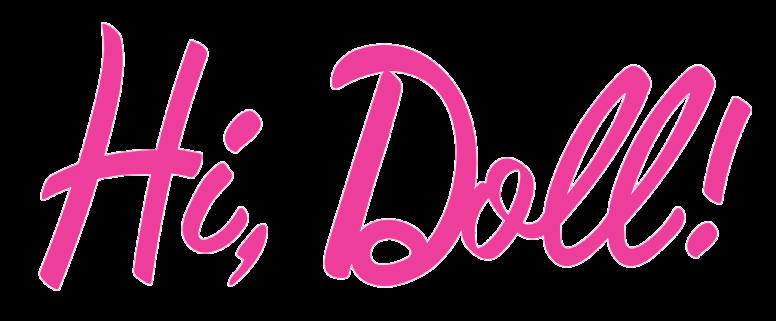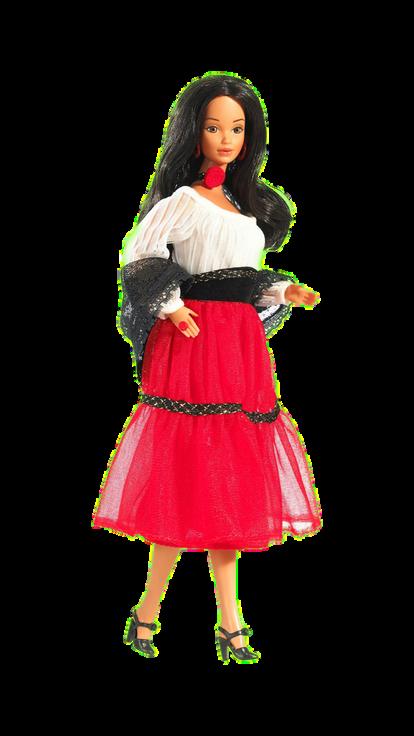AModernDoll’s G eto: aZin











Like many girls, I grew up loving Barbie, and I still love her to this day (pretty obvious, since I’m making this zine). But while my fondness and nostalgia for her have never waned, as I’ve grown into a young woman, I’ve become aware of the doll’s notso-perfect past.







Feminist groups express frustration with Barbie dolls' unrealistic body proportions. Girls of color haven't always seen themselves represented in the dolls. And in our current moment, with the constant looming weight of overconsumption and wealth inequality, it's hard to look at Barbie's dreamhouse, sports cars, and endless wardrobe- and not cringe a little bit.
So, there's plenty we can (and should!) criticize about Barbie but, we shouldn't cast her off entirely.
 Nicole Davis,Creator
Nicole Davis,Creator
Barbie has had a much more positive impact than we give her credit for. For a long time, baby dolls were the only kind of doll on the market, and girls were limited to playing as mothers. Ruth Handler wanted girls to dream without limitations, so she created Barbie as a toy girls could see themselves in, and imagine themselves being anyone they wanted to be.
Barbie bought her first dreamhouse in 1962, before women in the real world could have their own bank accounts. She ran for president in 1990, before a woman had ever made it onto the ballot. She's had over 200 other careers besides that- all while still being unapologetically pink and feminine. This is really important.
Barbie isn't perfect, but it is still possible to find a personal sense of empowerment in her, and I believe Greta Gerwig's Barbie will further transform her into an empowering figure for women of the 21st century (but more about that on page 7).
With all that in mind- put on your favorite pink outfit and get ready for your crash course in all things Barbie- because we’re about to enter the Summer of Barbie, and, hopefully, her most iconic era yet!












Barbie moves into her first dreamhouse


1962
Barbara "Barbie" Millicent Roberts emerges into the world on March 9th, from the fictional town of Willows, Wisconsin


1959

1961
Ken Carson is introdued as Barbie's boyfriend


1963
Midge Hadley is introdued as Barbie's best friend
Allan Sherwood is introdued as Midge's boyfriend
1964
1967

Mattel releases its first black doll, marketed under the name "Colored Francie" (yeah...)



The first nonwhite dolls named Barbie are released

1980
The "Happy Family" set is released, including a pregnant Midge + baby, Allan, and their son, Ryan. This set is discontinued amidst controversy that it "promoted teen pregnancy"
2002

Scan this QR code for a more in-depth look into the history of Barbie!






Mattel releases a more diverse collection of body types


2016
1985
Launch of the "We Girls Can Do Anything" Campaign
2018
Launch of the "Dream Gap" project
Greta G ises bigthings, but it w Mattel has utilized art and media as a tool for id








This zine is supposed to be about Barbie, but I want to talk about something completely different for a moment: a Marvel superhero named Red Wolf.






Red Wolf is a comic book character based on Indigenous American cultures. His first appearance was in 1970, so naturally, he wasn’t always an appropriate representation Still, Jeffrey Veregge, a member of the Port Gamble S’Klallam Tribe, loved Red Wolf comic books as a kid. He knew Red Wolf perpetuated inaccuracies about Indigenous people, but he was still a young boy who couldn't help but enjoy superheroes and comics, as young boys often do.
Veregge would grow up to become a professional artist, and he has been commissioned by multiple comic book agencies- including an offer from Marvel to redesign the character of Red Wolf, resulting in a beautiful comic series that incorporated authentic Salish art techniques and a more appropriate depiction of the Indigenous history the character is based on.


won't be the first time deological reinvention.
I’m telling this story because it’s reminiscent of my feelings about Barbie. She represents an unattainable lifestyle and has never made an effort to look like a real woman. But much like many young boys are drawn towards superheroes, many young girls are drawn toward Barbiemyself included- and it’s hard to erase that fondness as you age, even as you realize Barbie isn’t the hero you always assumed her to be.
The only other choice, then, is to project new meanings onto Barbie as you grow up. After all, much of Barbie’s messaging is comprised of: “You/I/We can be anything!” If she can be a president, a ballerina, and a veterinarian, then surely, she can become a feminist icon if we want her to.

This has given rise to multiple attempts at recontextualizing Barbie in pop culture, especially through film and other video media. Greta Gerwig is only the latest in a long line of those aiming to redefine her.
The first Barbie movies were the Barbie and the Rockers trilogy released in the late 1980s, but no more Barbie movies would be released again until the early 2000s, with films such as: Barbie as the Princess and the Pauper, Barbie Fairytopia, Barbie of Swan Lake, etc.

agency, capable of initiating action, leading a quest, solving a problem, or saving the environment. As Seiter explains, such female characters in made-for-girls media are not mere side-kicks or token female characters in male-dominated story worlds."


(Vered and Maizonniaux).
These films aren’t revolutionary feminist commentaries, but there’s no other children’s media from the same period that so casually promoted female independence and competency, at least not that I’m aware of.
Barbie had already been cultivating a girl-power persona since the 80s, but the early 2000s movies reached much wider audiences

(there’s not a single girl in my friend group
who can’t name all 12 dancing princesses by heart). Exposing such a high number of young girls to these films created a generation-wide perception of Barbie as much more empowering than she has been seen by previous generations,.
This continued in the 2010s with Barbie: Life in the Dreamhouse (the best piece of Barbie media IMO), which provides a semi-satirical view of life in plastic. Running gags across the series include: characters getting lost in Barbie’s infinite closet, grumbling about the impracticality of a dreamhouse with only one bathroom, and complete societal collapse caused by a glitter shortage. If it wasn’t for the Mattel logo appearing at the end of each episode, you might think B:LITDH was an unaffiliated parody.

Mattel is now repeating this history. Will Ferrell, portraying the role of Mattel's CEO in Barbie, has said of the film: “It’s a loving homage to the brand and, at the same time, couldn’t be more satirical just an amazing comment on male patriarchy and women in society and why Barbie’s criticized and yet why every little girl still wants to play with Barbie.”
Other cast members have praised the subversiveness of the film, with Ryan Gosling and Simu Liu going as far as to say it’s the best script they’ve ever read (which I wholeheartedly believe). Very little information has been revealed about the actual plot of the movie, but recent promotional materials unveiling a refreshingly diverse cast and the “She’s everything, He’s just Ken,” slogan have allowed fans to make inferences regarding the themes and messages we can expect from the film.






































